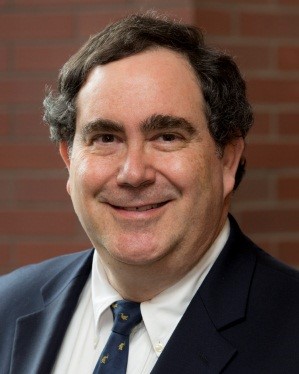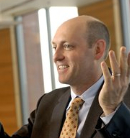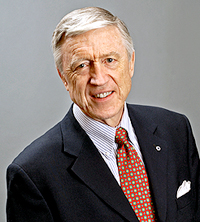Contributor: Jacob Adler
Work and Life is a radio program hosted by Stew Friedman, director of the Wharton Work/Life Integration Project, on Sirius XM’s Channel 111, Business Radio Powered by Wharton. Every Tuesday at 7 pm EST, Stew speaks with everyday people and the world’s leading experts about creating harmony among work, home, community, and the private self (mind, body, and spirit).
Sydney Finkelstein, Steven Roth Professor of Management at Dartmouth College and author of Superbosses: How Exceptional Leaders Master the Flow of Talent. He spoke with Stew about how to invest in people and nurture talent.
The following are edited excerpts of their conversation. Here’s the full interview.
Stewart Friedman: What separates good bosses from the best bosses from the superbosses?
Sydney Finkelstein: Good bosses will do some of the same things as a superboss, but superbosses will do everything more intensely. For example, mentoring is a well-known idea. If you have a good boss, they’ll give you some advice and help you navigate the organizational system. But superbosses are super mentors, mentors on steroids. They’re always engaged, always interacting with you. And they do more things in a more intense way and also do some stuff that very few good bosses do.
Stewart Friedman: What is it that separates what you refer to as the superbosses from merely good bosses?
Sydney Finkelstein: There are a bunch of things and one is apprenticeship. That’s the way everyone learned their craft for centuries but its gone by the wayside over the past 100 years. What superbosses have done is resurrect the old apprenticeship model where you’re rolling up your sleeves and working with people on your team, you’re engaged with them closely, you’re not quite going as far as micromanaging, but you’re also not afraid to get in the trenches with them. You’re a teacher, you’re a coach, and it’s like the master/apprentice relationship. That’s something that’s maybe not as common as we’d like to see it, but superbosses certainly do that. One other thing that is a big highlight of what they do is they are big-time innovators. They innovate in their business work, whether it’s George Lucas with digital technology for film, whether it’s a Ralph Lauren in fashion and his innovations redefining what the lifetime of fashion could be, or Julian Robertson in hedge funds, they are big-time innovators in their business and how they think about people. I think that’s combination that’s pretty impressive and one we can learn from.
Stewart Friedman: You’re saying innovators, in terms of how they deal with people, lead them, cultivate them, in what ways are they innovative?
Sydney Finkelstein: One is how they find talent. Most companies have a model in place, and the model is let’s identify what we need, come up with a job description, and go through lots of resumes and interviewing and pick the person who checks the most boxes and is the most impressive in that process. It’s not that superbosses will never do that. In a large company, you have to do that for some of these norms. But superbosses do something different, which is they’re willing to create a job for someone who they think is the right person, and I know the shuddering that’s going on in the HR community hearing that, but that’s what they do. They’re willing to create the job, and there are a lot of good stories from Ralph Lauren finding a woman at a restaurant and getting excited about how she was getting dressed and thought about clothes. Next thing you know, he’s offering her a job. For Bill Walsh, the former San Francisco 49ers head coach, who really gave birth to many of the head coaches in the NFL and how he thought about drafting. He would create opportunities for people that wouldn’t fit the mold of what most people are looking at.
Stewart Friedman: The priority is given to potential for the expression of a unique talent rather than the fit in a particular role that’s already existing, is that right?
Sydney Finkelstein: That’s exactly right. They’re looking for people that have that flexibility. I call it extreme flexibility, that’s one of the things they care about because they want to move people in different jobs and they want to create opportunities for people.
Stewart Friedman: How did you identify this category of people? Who fit the description and how did you go about doing this research?
Sydney Finkelstein: I started off with an observation of something I thought was interesting. I’m a foodie and I’m into high-end restaurants, and there happens to be a place called Chez Panisse in Berkeley, California. Alice Waters, what has she done? She’s reinvented the farm-to-table, local-food-sourcing of quality ingredients, everything revolving around the ingredients. It turns out that so many of the people that worked for her, went through that restaurant and became big names in the restaurant business themselves. I saw that, observed that, and said that’s interesting. I wonder if it’s true in another industry where there’s one person or a small number of people that have this outsized influence in the development of talent. That’s when I went to the NFL, because I like that as well, and it didn’t take long to realize it was Bill Walsh. The NFL is a good example because that’s an industry where you can measure very precisely, out of the 32 head coaches in a season, fully 20 of them were either working directly or indirectly for Bill Walsh. Then I thought to look at some other industries. I went from advertising, to hedge funds, to consumer packaged goods, to American comedy and fashion, and it wasn’t hard to find — by talking to a lot of people and doing a deep dive to what was going on in the industry — the one or two people that have this outsized influence on the development in a generation of talent.
Stewart Friedman: That was the criteria for selection, people who have had a huge impact on their field through the growth of talent in that field. Now that everybody understands how you chose these people, you then looked at what they do to have this outsized impact on the growth of talent in their field. Apprenticeships and creating roles for people to enable them to express their unique talents; I’m curious is there something that superbosses do that particularly invests in the person as a whole human being?
Sydney Finkelstein: I don’t know if it would be the same way that your work might indicate, but I’ll tell you a couple of ways I think that happens. Number one, people that work for superbosses are really engaged in the job, you know employee engagement scores are a disaster everywhere. Superbosses create jobs where individuals can actually have an impact. They know that they’re important, as everybody’s important, and that’s a powerful thing in your life, to have that feeling. I know it’s one of the biggest motivators. That’s part of what superbosses do. The other thing they do is that they are in many cases even willing to help you move forward in your career, not just working for them but going outside of that team to another part of the company or another organization entirely. That’s a bit unusual, that you would groom talent. The subtitle of the book is mastering the flow of talent, so not just people coming in, not just what you do with them when they’re part of your team, but what you do as they move out, and in some cases, help them move out. It’s very counter-intuitive, but if you think about what’s really important for an individual, most individuals don’t want to perform for Mr./Ms. X for the rest of their life, they want to fulfill their own potential. That’s what the superbosses enable them to.
Stewart Friedman: I was an executive at Ford Motor Company for a few years from 1999-2001 as head of leadership development. I hired a lot of people in that role, and one of the critical elements of my interviews, and I did hundreds of interviews with people, was to explore what they would want to do next, what would success look like in their next job following their stint working in my shop. It’s question that many of them had not been asked before, but I really tried to make it a point of focus with the people who came to work for me that they would leave their time with me in a better role following that experience. The more I made that an explicit part of that hiring practice, the more the other people wanted to work for me.
Sydney Finkelstein: You’re right, and the term I use in the book, talent magnet, describes just what you’re talking about.
Stewart Friedman: It’s not that hard to do, and it’s actually a lot of fun. I know our listeners are eager to find out what can I do to enhance my capacity as a boss so I can have a bigger impact on the world through the legacy that I create through the people that I cultivate. What can people do?
Sydney Finkelstein: Everything that superbosses do is teachable and learnable, it’s not rocket science. It takes a lot of work. You don’t become Ralph Lauren or George Lucas overnight; there’s a lot you have to do. But if you’re willing to do it, it’s all possible. I try to talk a lot about what specific steps you can take, even from what we talked about earlier about hiring somebody. You have your old method of hiring, but how about just experimenting and hiring one person, going out of your way to find somebody where you find the person before you find the job and back them into it. The sky’s not going to fall when you do it, and you’re going to begin that process of just opening your brain and mind to the possibility of finding talent in all other places. I think there are some really specific things as well that go far beyond that. I would look at your calendar. We’re so scripted these days, people have so many meetings and those meetings are killers. I don’t understand why we put ourselves through that in a job with so many meetings. Push yourself out of that world. Of course, it’s not going to disappear, but leave time for much more unstructured interaction where you arrive unannounced at the desk or cubicle of someone on your team and dedicate 30 minutes or an hour and digging in with him/her exactly what they’re doing. You push them and you challenge them and coach them and help them think about it a little differently, and certainly you enable them to learn from your own experience. It’s a little thing, but it actually makes a big difference.
Stewart Friedman: You can actually do it in smaller chunks. It doesn’t have to be a full hour or half-hour, or even 20 minutes. In 10 minutes or even five, you can have an interaction that really touches people and demonstrates to them your interest in their development. Right?
Sydney Finkelstein: You really could. How hard is that to do in the scheme of things? It’s only hard if we allow ourselves to adopt this idea that I’m so busy, I’m running here and doing this and that. We push that on ourselves, we constrain ourselves in so many ways, and I think that’s a mistake. Superbosses are looking for those opportunities. I also think we should think about how accessible we make it. How are the barriers that we’re putting in front of us that we might not know that make it difficult for people on our team to interact with us? There are a remarkable number of superbosses who place their desks, not in an office, not in a corner office, but in an open area where anyone can reach them at any time. It’s a symbolic thing, but it’s meaningful. You definitely can do that.
Stewart Friedman: I wanted to ask you whether superbosses are always nice. Is it possible to be a superboss who is scary or can infuse a work environment with a sense of fear while still holding people to really high standards and pushing them far?
Sydney Finkelstein: It’s a good question, because being a superboss doesn’t mean you’re a soft touch. The definition of a superboss is someone who helps other people get better and creates talent. There are a lot of ways to do that. While the superboss playbook, if you will, is very similar in terms of apprenticeship, innovation, and finding talent, the style does vary. In the book, I actually talk about three different styles, including one that is called the glorious bastard. It’s the manager, the Larry Ellison type, that personality that we’re familiar with now, they are really tough. They’re not exactly the happiest places to work, so it’s not for everyone, but if you can handle it, and you can absorb the learning that’s going on, the hyper-intense environment, then the opportunities are gigantic. You look at the legacy of a Larry Ellison, all the people that work for him from Mark Benioff, who now runs Salesforce.com, to lots of others, but it’s not an easy thing to do for those types of people.
Stewart Friedman: I wonder if there are lessons that you drew, whether in the book or just your own life about cultivating talent as a superboss and being a parent. Do you see any parallels?
Sydney Finkelstein: I found the more I got into the superboss world, the more you see that it applies to everything. In this case, I actually dedicated the book to my own mother and I called her the first superboss I ever had.
Stewart Friedman: What made her a superboss?
Sydney Finkelstein: For that you’re going to have to give me several hours on the phone. Certainly high expectations, but you just knew that this was someone that had your best interests at heart and wanted you to be successful but also was not going to just let you linger, was going to open a door to a world and say there’s nothing you can’t do. That turns out not to be true. I’m not an Olympic athlete, I never made the Montreal Canadiens hockey team.
Stewart Friedman: Is that what she wanted?
Sydney Finkelstein: She wanted me to have opportunities to fulfill my potential, and she opened the door to that. She did in a very subtle way, just by talking. There was no lecture going on here, it was maybe just being a good parent but it had a gigantic impact on me.
Stewart Friedman: How do you think that translated to your own parenting style?
Sydney Finkelstein: I have one daughter who’s now 25 years old. I have done many of the same types of things I thought I learned. What’s funny is that it’s only in doing this research for superbosses that I came to the realization of some of the things we’re talking about now. Things that are in you, there are stories I remember from my own life that happened to me with different people doing different things that were very impactful, but I didn’t appreciate, or fully appreciate, just how meaningful some of those things were. In thinking back and doing this research and talking about all these other people, it became apparent.
Stewart Friedman: Jessica is calling from Philadelphia. Jessica, welcome to Work and Life. How can we help you?
Jessica: I work in corporate America and I have a boss who goes by the laws of micromanagement. Every day, she asks where are you, what are you doing at this time of day. I’m in sales, so I’m usually in the office, but my question is what’s the best way to deal with that type of micromanagement?
Stewart Friedman: How do you change a micromanager to a superboss if you’re working for her?
Sydney Finkelstein: The problem with a micromanager is that she doesn’t come with a role that superbosses come with, which is delegator. They delegate and they are closely attuned to what you are doing, they do both. When you have a person who’s just on one side, you have a much deeper problem. Why do people do that, is what I think about. In my experience when a boss doesn’t truly trust the people on their team, they end up doing too much, not delegating as much or always checking and checking. Some of that could be internal to a person, and that person could benefit from some coaching on occasion, but sometimes it could be the subordinate in this example, Jessica. No matter how good she is, she might really need to sell up in a sense. We talk about managing up, what about selling up about how you’re adding value, how you’re creating value and a general deeper level of trust between boss and team member.
Stewart Friedman: Jessica, does that make sense to you to change the relationship in such a way that your boss can trust you more and be less micromanaging?
Jessica: Yeah, I think you’re right on with that. I think every time we have a conversation I’m reinforcing what I’m selling and adding to the company. My concern is because it’s a continuous relationship that I’ve had, how do I make it so that she trusts me? I think it does come down to trust and you’re right with that, and to your point I don’t think she trusts me or anybody on this team. How could I better work with her knowing that’s how she feels?
Sydney Finkelstein: That’s a tough situation. I think trying to demonstrate with your results your capability, what you can do. I don’t know if you know her well enough or can find a way to suggest that she work with a coach or some such thing. That could be a sensitive thing to ask directly, but maybe indirectly is a possibility. It’s a lot easier to say what I’m about to say than do it, but sometimes you don’t have the right boss and that boss is not going anywhere and you might want to look for an internal transfer of some other opportunity. Some people just will not change because of who they are, and some of these insecurities could be so deeply embedded in who they are that it started a long time ago.
Stewart Friedman: What’s the impact you’re hoping your book is going to have on the business world in terms of getting across certain ideas and tools that can help people cultivate talent and enrich their lives and working lives?
Sydney Finkelstein: At an individual level, and I mentioned employee engagement before, I find it an abysmal situation when so many people are at a job that doesn’t have any fulfilling sense so that they’re not engaged. Superbosses, even though they could be tough, they absolutely convey the importance of each person, they make you feel like you have an impact. The whole world of millennials, that’s what they want from the start, and the superboss approach is one that’s very meaningful. The second thing is from an organizational point of view, you look at where and how organizations have changed in the last 10 or 20 years. There’s been incredible innovation in supply chain management, manufacturing, technology, marketing, and sales. Where’s the innovation when it comes to HR? I know there are a lot of apps and software that help you run better meetings and you can figure out where everyone is, feedback mechanisms, and I’m not saying those are bad things. They all can have some value, but fundamentally, when you talk to senior executives, they’re saying the same thing. We need talent, we need to get better talent, and we need to solve our talent problem. But if they keep saying it, it’s still a problem. Year after year after year, it’s time for something new, even if it sounds a little scary. I hope the superboss approach is that something new.
For more information about Syd Finkelstein and Superbosses follow him on Twitter @SydFinkelstein.
About the Author
Jacob Adler , W’18, is a sophomore at Wharton and a contributor at The Daily Pennsylvanian, numberFire, and Fake Teams.
 But before you unpack, let me explain a little more specifically what we did. There’s a body of research that talks about gender role ideology, and it shows that a lot of people are much more flexible in terms of their views on what women’s and men’s role should be. It also shows there’s a substantial minority stuck in the old ways, committed to traditional, standard gender ideology.
But before you unpack, let me explain a little more specifically what we did. There’s a body of research that talks about gender role ideology, and it shows that a lot of people are much more flexible in terms of their views on what women’s and men’s role should be. It also shows there’s a substantial minority stuck in the old ways, committed to traditional, standard gender ideology. The fundamental premise in Friend and Foe is that in all of our relationships — with our kids, with our spouses, and at work with our colleagues, our bosses — we’re constantly going back and forth as friends and foes. We’re not constantly foes, we’re not constantly friends, rather we’re really doing both. And once we understand this, we can begin to see things like comparisons. In the first chapter we talk about how we’re driven to compare ourselves with other people, and these comparisons can make us motivated, they can make us happy, but they can also make us perfectly miserable, and in each chapter we talk about finding our balance, so you can figure out a way to harness the benefits without succumbing to some of the drawbacks.
The fundamental premise in Friend and Foe is that in all of our relationships — with our kids, with our spouses, and at work with our colleagues, our bosses — we’re constantly going back and forth as friends and foes. We’re not constantly foes, we’re not constantly friends, rather we’re really doing both. And once we understand this, we can begin to see things like comparisons. In the first chapter we talk about how we’re driven to compare ourselves with other people, and these comparisons can make us motivated, they can make us happy, but they can also make us perfectly miserable, and in each chapter we talk about finding our balance, so you can figure out a way to harness the benefits without succumbing to some of the drawbacks. I got into this when I was working as a primary care doctor in Seattle. It was right after the iPad had been released and iPhones were becoming much more of a factor in our culture. I was fascinated by how it much it changed the dynamic in the office setting. I wasn’t seeing this as good or bad. I observed that this was a new cultural trend that we’re going to have to study and figure out. It’s good in some ways because it’s connecting parents to their spouse or information or what I was telling them about, but it also put up a new barrier. I found that there was less eye contact, attention, and social engagement.
I got into this when I was working as a primary care doctor in Seattle. It was right after the iPad had been released and iPhones were becoming much more of a factor in our culture. I was fascinated by how it much it changed the dynamic in the office setting. I wasn’t seeing this as good or bad. I observed that this was a new cultural trend that we’re going to have to study and figure out. It’s good in some ways because it’s connecting parents to their spouse or information or what I was telling them about, but it also put up a new barrier. I found that there was less eye contact, attention, and social engagement. W’18, is a sophomore at Wharton and a contributor at The Daily Pennsylvanian, numberFire, andFake Teams.
W’18, is a sophomore at Wharton and a contributor at The Daily Pennsylvanian, numberFire, andFake Teams. The whole “opting out” story has always been overblown. People thought that it is happening at a much greater scale than was actually taking place. When I was starting to study it, it wasn’t that I was interested in the subject because women were opting out in droves. It was really because those who were opting out were a key group of women—those who are extremely well-trained and groomed for leadership—who were leaking out of the pipeline to leadership. Opting Out was never about a huge trend. The trend was way overblown by the media.
The whole “opting out” story has always been overblown. People thought that it is happening at a much greater scale than was actually taking place. When I was starting to study it, it wasn’t that I was interested in the subject because women were opting out in droves. It was really because those who were opting out were a key group of women—those who are extremely well-trained and groomed for leadership—who were leaking out of the pipeline to leadership. Opting Out was never about a huge trend. The trend was way overblown by the media. is an undergraduate freshman in the Vagelos Program in the Life Sciences and Management at the University of Pennsylvania.
is an undergraduate freshman in the Vagelos Program in the Life Sciences and Management at the University of Pennsylvania. It all started back in 2004 when I became really interested in emotional inequality in the population.
It all started back in 2004 when I became really interested in emotional inequality in the population. is an undergraduate senior in the Huntsman Program in International Studies and Business at Penn focusing on Management and Latin America
is an undergraduate senior in the Huntsman Program in International Studies and Business at Penn focusing on Management and Latin America There’s an easy answer to that question Stew. I wrote my dissertation a little more than 30 years ago when I was a doctoral student at Cornell University. I was in a program in organizational studies, and serendipitously a faculty member with whom I was working closely got a big grant from the National Institute of Health to study the diffusion of innovations to hospitals. That was a project that I was fortunate enough to be involved in. I actually wrote my dissertation on data we collected from that study, and it turns out, at least in my case, that you become what you write. I started writing more about hospitals and innovation, and invitations to speak and consult and so on began to emerge from that. There was a bit of a tipping point there, where the kind of opportunities that were coming my way were largely in healthcare, and so I ultimately picked up that ball and ran with it.
There’s an easy answer to that question Stew. I wrote my dissertation a little more than 30 years ago when I was a doctoral student at Cornell University. I was in a program in organizational studies, and serendipitously a faculty member with whom I was working closely got a big grant from the National Institute of Health to study the diffusion of innovations to hospitals. That was a project that I was fortunate enough to be involved in. I actually wrote my dissertation on data we collected from that study, and it turns out, at least in my case, that you become what you write. I started writing more about hospitals and innovation, and invitations to speak and consult and so on began to emerge from that. There was a bit of a tipping point there, where the kind of opportunities that were coming my way were largely in healthcare, and so I ultimately picked up that ball and ran with it.